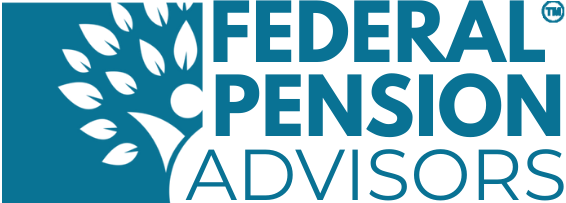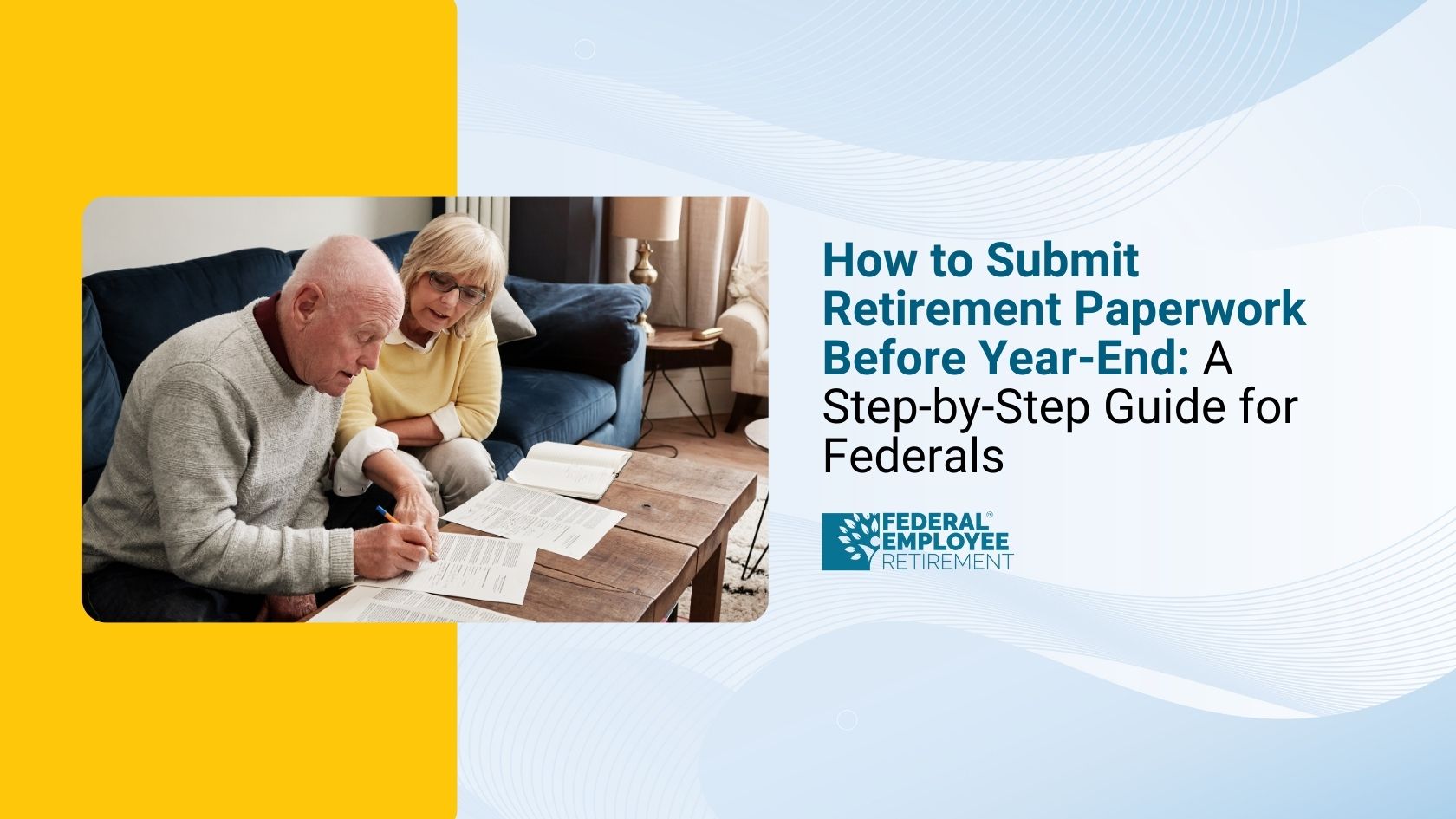You’re not alone; 4,359 federal employees booked their free review.

What is Retire FERS on My Paycheck?
If you see a line on your paycheck that says “Retire Federal Employees Retirement System,” it is the money taken from your pay to build your retirement. The Federal Employees Retirement System is the retirement program for most civilian federal employees. Your paycheck deduction supports three separate sources of retirement income: the basic benefit plan, Social Security, and the Thrift Savings Plan. Together, they create a retirement safety net that mixes a pension, Social Security payments, and personal retirement savings.
Quick summary of the three parts—
- Basic benefit plan: A pension based on how long you worked and your highest three years of pay.
- Social Security: The same contributions you and private sector workers make to Social Security.
- Thrift Savings Plan: A savings and investment account similar to a private sector 401(k).
Key components of FERS
- Basic Benefit Plan: A pension that provides a monthly benefit in retirement based on your years of service and "high-3" average salary. Your contributions are automatically deducted from your pay.
- Social Security: You contribute to Social Security at the same rate as private sector employees.
- Thrift Savings Plan (TSP): A tax-deferred retirement savings plan, similar to a 401(k), where your contributions are invested. You can also choose to contribute more than the automatic deduction, and the government may provide a matching contribution.
1. The Basic Benefit Plan
The basic benefit plan is a traditional pension. Your future monthly payment depends on your years of creditable service and your “high three,” which is the average of your highest three consecutive years of basic pay. The formula is simple in structure:
High three average salary times years of service times the pension multiplier equals your annual pension benefit.
For most workers, the pension multiplier is one percent. For employees who are 62 or older with at least 20 years of service, the multiplier rises to 1.1 percent. For example, with a high three salary of seventy-five thousand dollars and twenty-five years of service, the annual pension would be:
75,000 times 25 times 0.01 equals 18,750 per year, which is about 1,562.50 per month.
Your years of creditable service are shown on your personnel form, which the agency provides at least once a year. The pension calculation uses only basic pay. It does not include overtime, special pay, bonuses, or other extras.
2. Social Security
As a federal employee covered by this retirement system, you also pay into Social Security at the same rate as private sector workers. That contribution is taken from your pay, and your agency contributes the matching share. Social Security will then provide part of your retirement income and may also provide disability or survivor benefits, depending on your work history and eligibility.
3. The Thrift Savings Plan
The Thrift Savings Plan is a tax-advantaged retirement savings account similar to a 401(k). Each pay period, your agency deposits one percent of your basic pay into this account automatically. You can choose to contribute additional money from your paychecks. The agency will match a portion of those additional contributions up to five percent of your pay. Those extra contributions are tax-deferred and invested according to the funds you select.
You will get a list of fund choices when you enroll. The main options are:
- Individual fund choices that let you build your own mix from a set of core funds.
- Lifecycle funds that give a ready-made diversified mix based on a target retirement date.
- An option to invest some of your balance in outside mutual funds, if you meet the eligibility rules and accept the fees.
The Thrift Savings Plan is an investment account and not a guaranteed pension, and so your final balance after many years will depend on how much you and your agency put in, the funds you choose, and market performance.
Check out the - TSP calculator
What the Deductions Mean for You
- Automatic enrollment: If you are a new federal employee, you are automatically enrolled in FERS.
- Vesting: You become fully vested in the basic retirement benefit after five years of service, meaning you are guaranteed a FERS annuity upon retirement.
- Leaving federal service: If you leave federal service before being fully vested, you can take a refund of your contributions, but you will lose your right to a future annuity for that service.
- Retirement income: Upon retirement, you will receive benefits from the Basic Benefit Plan, Social Security, and any TSP savings you have accumulated.
Contribution limits and catch-up rules
There are annual limits on how much you can defer into the Thrift Savings Plan. The limits change over time.
In recent years, these limits have increased, and there are higher catch-up limits for workers aged fifty and older.
There are also special catch-up rules for certain older age groups in specific years. There are overall annual addition limits that apply to some service members and certain situations. If you want to maximize your retirement savings, it is usually wise to at least contribute enough to get the full agency match.
Common mistakes and practical advice
A frequent mistake is not contributing enough to get the full agency match. Contributing to the match is effectively free money and can double the return on those contributions over time, especially if you leave them in the default government fund that carries very low risk.
Types of retirement and eligibility
There are several ways to leave federal service with retirement benefits:
- Voluntary retirement when you meet age and service requirements.
- Early retirement in special situations, such as reductions in force or other involuntary separations.
- Disability retirement if you are unable to perform your duties and meet minimum service requirements, typically after at least eighteen months of service.
- Deferred retirement if you leave federal service after meeting minimum service rules but before you are old enough to collect immediate retirement.
You become fully entitled to your basic retirement benefit, or vested, after five years of creditable federal service. If you leave before becoming vested, you can take a refund of your contributions, but you will forfeit the right to a future pension for that period of service.
How and When to Apply
The Office of Personnel Management provides guidance on preparing for retirement. Agencies typically suggest that you start planning several years before your desired retirement date. When you are within a couple of months of retiring, complete the required retirement application and submit it through your agency so benefits can begin soon after your official retirement date.
Who is Covered
This retirement system covers civilian federal employees in the executive, judicial, and legislative branches. It does not cover state or local government employees.

The bottom line
When you see “Retire Federal Employees Retirement System” on your paycheck, it is not just another deduction. It is money you are putting aside in three different ways: a pension, Social Security, and a personal retirement savings account. Those three parts together give federal employees a strong retirement foundation. Contributing wisely, understanding the formulas and timelines, and taking full advantage of any agency matching can make a noticeable difference in the quality of life you have in retirement.
Disclaimer:
The information provided in this article is for educational and informational purposes only. It should not be considered financial, tax, or legal advice. While every effort has been made to ensure the accuracy of the information, federal retirement rules and contribution limits may change over time. Employees should consult the Office of Personnel Management (OPM), their agency’s human resources office, or a qualified federal retirement specialist for guidance specific to their individual situation.
Content references -
OPM goverment
Investopedia
steserve


Get Updated
Subscribe to our weekly updates for the latest on retirement planning, federal benefits, exclusive webinars, and more!
Download Federal Retirement: Step-by-step Checklist
This comprehensive guide will help you understand your federal benefits, optimize your savings, and plan for a comfortable future.



.png)








